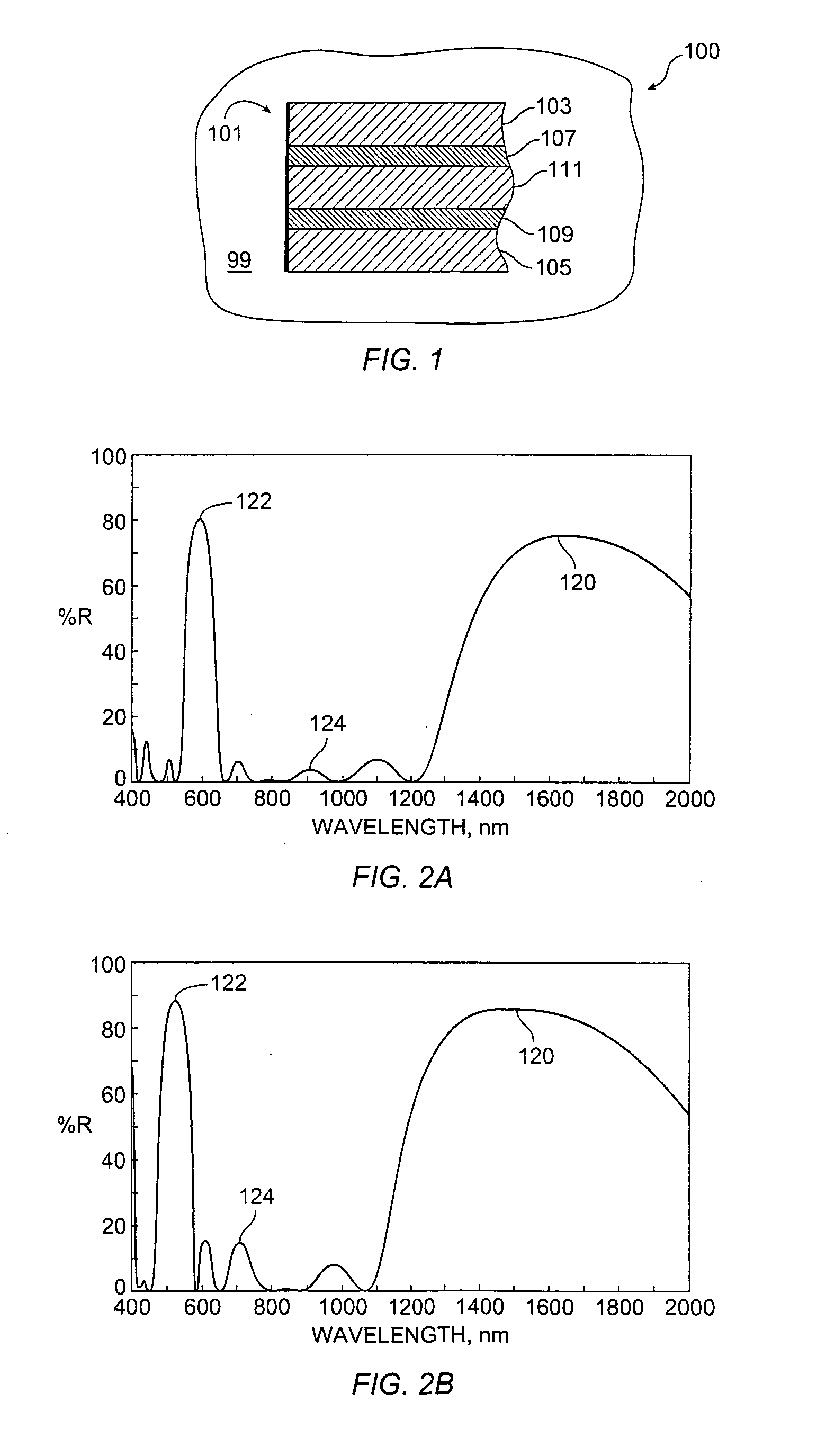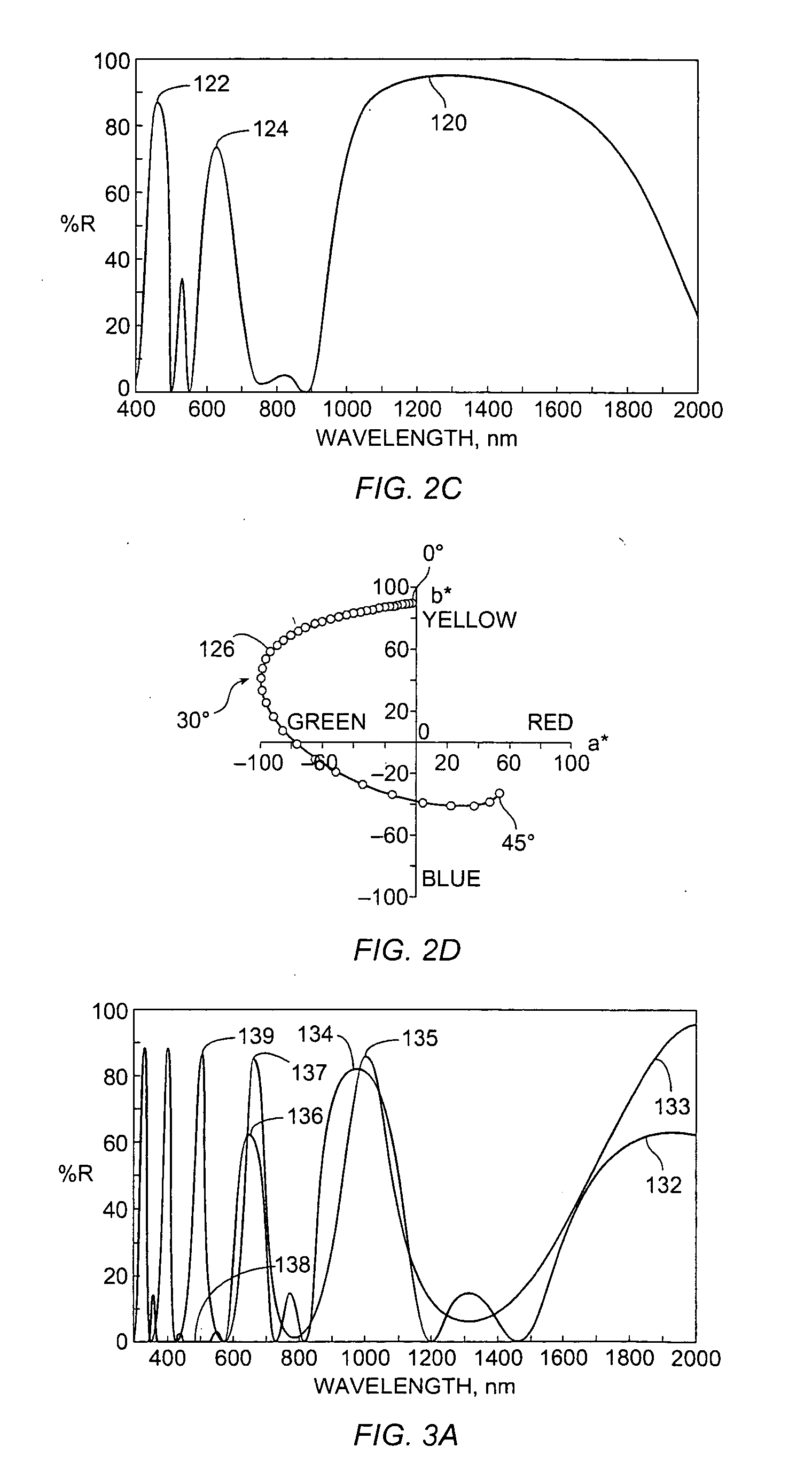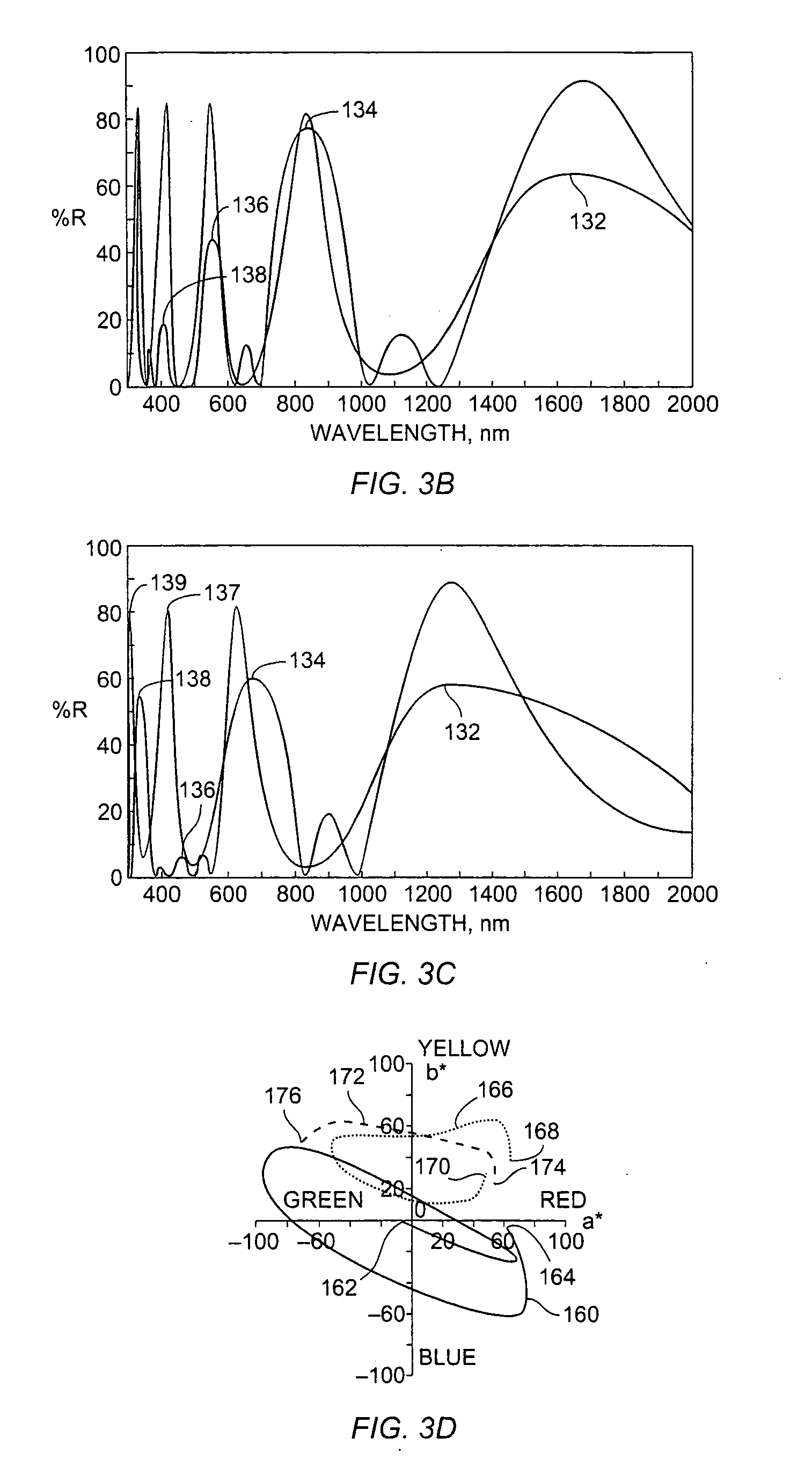All-dielectric optically variable pigments
a dichroic pigment, optically variable technology, applied in the field of pigments, can solve the problems of maximum constructive light interference, change of color in the pigment, and constructive or destructive interference with the light reflected from the surface of the filter, and achieve the effect of unique color properties
- Summary
- Abstract
- Description
- Claims
- Application Information
AI Technical Summary
Benefits of technology
Problems solved by technology
Method used
Image
Examples
Embodiment Construction
1. Introduction
[0031] The process control achievable with vacuum deposition techniques offers the possibility of predictable optically variable pigments and foils. It was discovered that computer modeling of reflectance versus wavelength and color travel, in air or preferably in a carrier with an index of refraction greater than air, such as paint, can be used to design pigment flakes having specific color characteristics without undue trial-and-error experimentation. Use of controllable vacuum thin-film deposition techniques can be used to consistently obtain pigment flakes with the selected optical properties. In particular, it was found that suppression of reflectivity peaks of non-desirable color could produce interference pigments with unique color-shifting characteristics. Such color performance is difficult to achieve by conventional optical design.
[0032] One aspect of vacuum deposition techniques is that the layer thickness is typically considered according to its optical...
PUM
| Property | Measurement | Unit |
|---|---|---|
| reflectivity | aaaaa | aaaaa |
| reflectivity | aaaaa | aaaaa |
| reflectivity | aaaaa | aaaaa |
Abstract
Description
Claims
Application Information
 Login to View More
Login to View More - R&D
- Intellectual Property
- Life Sciences
- Materials
- Tech Scout
- Unparalleled Data Quality
- Higher Quality Content
- 60% Fewer Hallucinations
Browse by: Latest US Patents, China's latest patents, Technical Efficacy Thesaurus, Application Domain, Technology Topic, Popular Technical Reports.
© 2025 PatSnap. All rights reserved.Legal|Privacy policy|Modern Slavery Act Transparency Statement|Sitemap|About US| Contact US: help@patsnap.com



